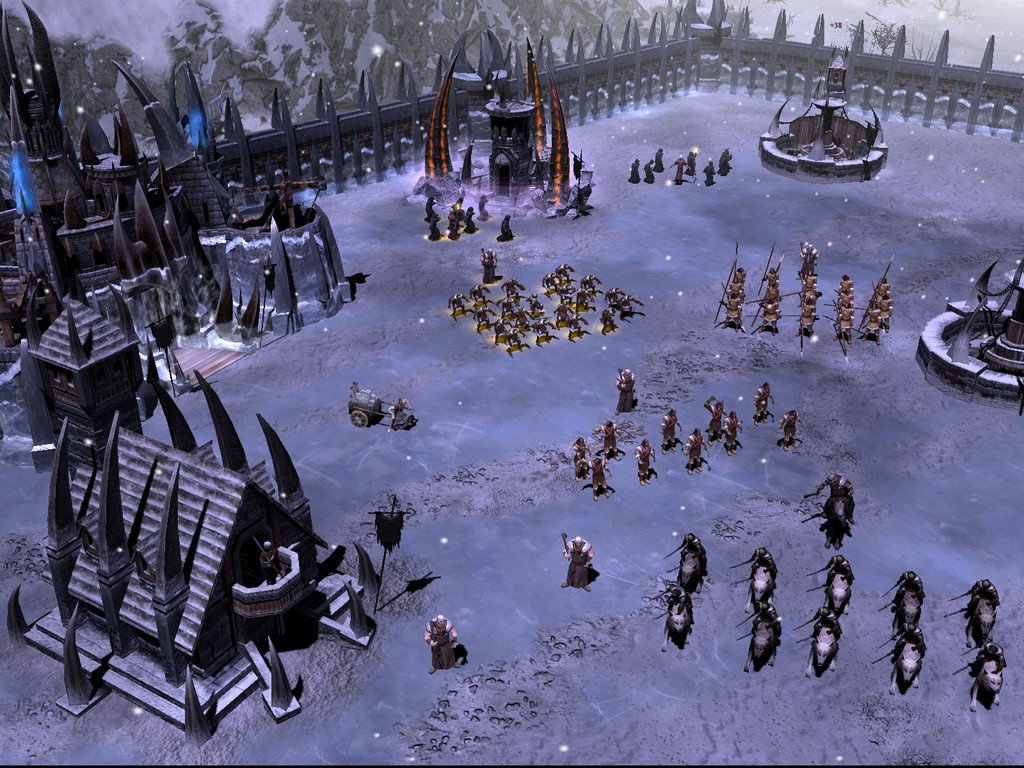

The Lord of the Rings: The Battle for Middle-earth II is a real-time strategy video game developed and published by Electronic Arts. It is based on the fantasy novels The Lord of the Rings and The Hobbit by J. R. R. Tolkien and its live-action film trilogy adaptation. It is the sequel to Electronic Arts' 2004 title The Lord of the Rings: The Battle for Middle-earth. The Windows version of the game was released on March 2, 2006 and the Xbox 360 version was released on July 5, 2006. Along with the standard edition, a Collector's Edition of the game was released, containing bonus material and a documentary about the game's development. The online servers were shut down for Windows in 2010 and Xbox 360 in 2011, however Windows users may still play online using Virtual Private Network programs.
The story for The Battle for Middle-earth II is divided into Good and Evil Campaigns. The Good Campaign focuses on Glorfindel, an Elf who is alerted to a planned attack on the Elven sanctuary of Rivendell. With help from the Dwarves and other Good forces, the Elves attempt to eliminate Sauron and his army to restore peace in Middle-earth. In the Evil Campaign, Sauron sends the Mouth of Sauron and the Nazgûl to muster wild Goblins. With his army, Sauron moves forward with his plan to destroy the remaining Good forces in the North.
The Battle for Middle-earth II received generally favorable reviews from video game critics. Reviews praised the game's integration of the Lord of the Rings universe into a real-time strategy title, while criticism targeted the game's unbalanced multiplayer mode. The Battle for Middle-earth II received numerous awards, including the Editors' Choice Award from IGN. At the end of March 2006, The Battle for Middle-earth II reached fourth in a list of the month's best-selling PC games. A Windows expansion pack for the game was released on November 28, 2006, called The Rise of the Witch-king, which features a new faction known as Angmar, new units, and several gameplay improvements.




OS: Microsoft Windows XP or 2000 CPU: 1.6 Ghz equivalent or higher processor Memory: 256 MB of system RAM Video Memory: 64 MB GeForce3-class video card HDD: 4 GB of free hard drive space





0 comments:
Post a Comment